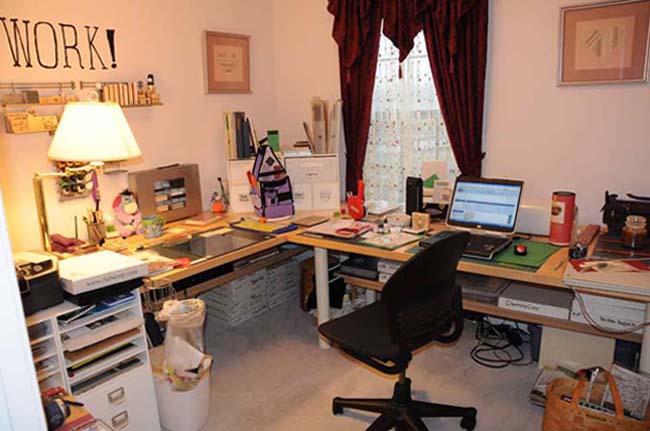I am going to get caught up, pretending that I started this for New Year's. I need to remind myself of these things, too. It's been too long since I used Photoshop for digital scrapping. I don't promise these tips will work for Elements, just Photoshop.
Tip #1. When you want to change quickly to the Move tool, press and hold the Command(Mac) or Control(PC) key as you click and drag your mouse. No letter needed, just that button by itself.
Tip #2. If you want the Move tool to automatically activate the layer of the object you click on (which is amazingly convenient) you must select the checkbox for Auto-Select that shows up on the left side of the status bar when the Move tool is active. Pressing Command or Control will not change the status bar. If you have it selected, then pressing Command or Control will allow you to use the Move tool with auto-select. This becomes a super quick way to make a layer the active one, without using the Layers Palette.
Tip #3. If you want to enlarge your active image to as large as possible inside the Image Window, press Command or Control and 0. That's a zero, not the letter 'o'.
Tip #4. If you want to zoom in, press Command or Control and the + key. I remember it as a 'plus' to make it larger. You don't have to use the shift to make it a +.
Tip #5. To zoom out, press the Command or Control key and the - key. Think of it a 'minus' to make it smaller. Again, no shift needed.
Tip #6. When you have zoomed in and you want to move your image to another area, press and hold the space bar. Whatever indicator you have will turn to a hand, and you can click and drag to move the image so a different area is visible.
Tip #7. The more a person uses keyboard shortcuts, the less time they spend moving the mouse all over the place. This makes Photoshop faster and more comfortable to use. Clicking on a menu, then choosing a sub-menu and selecting an option takes forever compared to pressing a few keys.
Tip #8. To create a copy of the layer that is active, press Command or Control and the letter 'j.'
Tip #9. Turn off that warning message about 'Are you sure you want to delete this layer?' That way, all you have to do is press the Delete key and poof! the layer is gone.
Tip #10. There are all kinds of complicated instructions available about how you can set points in your history so you can try different things and then revert to where you put the fork in the history. I do not do this. It's too difficult for me to remember. I simply 'save as' and use a descriptive name. I'd rather go looking for "Big Drop Shadows.psd" than try to remember which Drop Shadow in the history was large.
Tip #11. If you want to move something a teensy amount, use the arrow keys. The object will move one pixel at a time. Pressing Command or Control and tapping the arrow keys also works.
Tip #12. Pressing the Shift key will keep what you are doing in a straight line. If you are selecting, moving or transforming a thing, it will be a perfect square or circle, keep the same aspect ratio (it won't distort and become too fat or too thin)or will stay on a horizontal or vertical line.
Tip #13. To save the way you like Photoshop set up, with the panels and tabs and so on, go to Window | Workspace | New Workspace and give your set up a name that describes it. I have two, because when I'm doing digi-scrapping, I want different stuff visible than when I'm working with pictures from my camera. Sometimes I want Styles and sometimes I want adjustment layers.
Tip #14. Instead of killing yourself dragging panels here and there and trying to re-size them perfectly, try using one of the default workspaces available. Go to Window | Workspace and click on one of the options. If you don't like it, try something else.
Tip #15. Don't forget Help when you get stuck. Photoshop has an extensive and clearly written Help document. Ever since Photoshop first came out, right-brained people have been trying to use it and left-brained people have been writing instructions so they aren't pestered to death with questions. Your answer is probably in there.
Tip #16. There is a complete (more or less) listing of the keyboard shortcuts available in Photoshop. Go to Window | Workspace | Keyboard Shortcuts & Menus. One tab is keyboard shortcuts and the other is Menus. Click on the arrows to expand the lists and you'll find more keyboard shortcuts than you could ever hope to memorize.
Tip #18. Photoshop is a processor and memory hog. No matter how much you have, it will always run better with more. However, it is polite enough to follow limits. In the Preferences pop-up, under Performance, you can see how much Memory is available on your computer. Photoshop will even suggest an ideal range. I suggest that you allow Photoshop to use the maximum possible of the ideal range.
Tip #19. While we are looking at preferences, if you have Photoshop installed on one drive and you store your images on a different drive, set Photoshop to use the same drive it is installed on for the scratch disk. Especially if you are using an EHD to store your images, as is popular.
I'll try to write up a bunch of tips when I have time and then all I'll have to do is post one each day. Heck, I might even figure out how to do this on my Droid!
Wednesday, January 19, 2011
Subscribe to:
Post Comments (Atom)





No comments:
Post a Comment